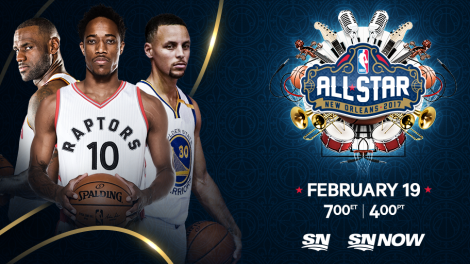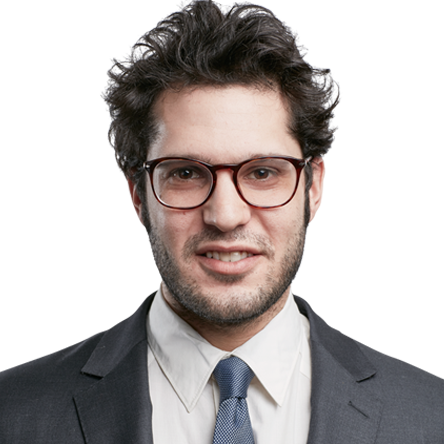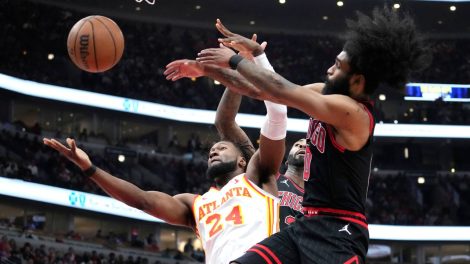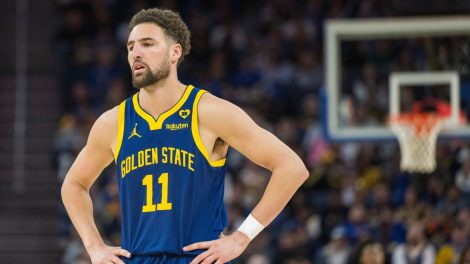Squeeze into the phone booth, help me stick some gum on these broken antennae, and let’s go all the way back to the morning of January 30, 2013.
At the time, the Toronto Raptors were 16-29 and going on five seasons since they’d made the playoffs. In that span, the team had seen three head coaches — Sam Mitchell, Jay Triano and Dwane Casey — and seemingly more rostered players than Carlos Santana’s had bandmates (read: a lot).

To that point in the season, the most common lineup the Raptors had trotted out was: Jose Calderon, (pre-all-star) DeMar DeRozan, Landry Fields, Ed Davis and Amir Johnson. All fine people, but hardly the makings of a playoff team, let alone a contender (worth noting: Kyle Lowry lost his starting job to Calderon that December).
With his job in jeopardy and the trade deadline fast approaching, President/GM Bryan Colangelo knew it was time to swing for the fences. And he did. Except, to continue the baseball analogy, the Raptors were down five runs and even a grand slam wouldn’t be enough to turn their fortunes for the better.
Since taking control of the franchise in 2006, Colangelo had taken home an Executive of the Year award, built a winning team around Chris Bosh, and then promptly saw it all fall apart when he let the all-star big man walk in free agency in 2010. Ever since, the Raptors had become a laughingstock around the NBA. Or, worse: an afterthought.
[relatedlinks]
To Colangelo’s credit, on this particular day — Jan. 30 — he managed to acquire an all-star level player in Rudy Gay as part of a three-team trade. Only, it didn’t exactly work out as Colangelo envisioned…
THE TRADE
Memphis Grizzlies receive: Ed Davis, Austin Daye, Tayshaun Prince, Raptors’ 2013 second-round pick
Detroit Pistons receive: Jose Calderon
Toronto Raptors receive: Rudy Gay, Hamed Haddadi
In retrospect it should have been painfully easy to see that Gay was hardly the answer the Raptors needed — a mismatched piece from the wrong puzzle and only a small part of bigger changes that needed to take place in order for the Raptors to become relevant again.
But it did play an integral part in franchise history and in returning the Raps to winning basketball it hadn’t experienced in half a decade.
Let’s take a closer look at the trade that brought Gay to Toronto and the aftershocks of Colangelo’s Last Stand, both then and now.
THEN
So we’ve established that the Raptors were more or less a steaming pile up until the point of the trade. In Gay, the glass-half-full thinking went, the Raps had brought in the best player in the deal — an athletic wing with playoff experience (Gay’s Grizzlies teams had made the post-season each of the previous two seasons) and a potential go-to scorer. With two years remaining on his contract, Gay would be the centrepiece of a Raptors offence that already featured DeRozan and was about to get Andrea Bargnani back from an extended stay on the injured list.
Only Gay quickly proved to be a fairly terrible fit.
While Colangelo et al should have seen it coming — and possibly did — he was ill-fitted alongside DeRozan, who was coming into his own as a player and shared a similar skill-set on offence (if you think the Raps play a lot of iso-ball now…).
Still, Gay brought a level of talent and athleticism, and came to Toronto as secretly one of the more clutch players in the league, something that Raptors fans had already seen close-up:
The Raptors may not have won a whole lot with Gay in uniform — though that clutchness (is that a word?) emerged at times — but he managed to dazzle fans nonetheless with his signature extended-tomahawk dunks.
So he had that going for him, which is nice.
The toughest part of the deal for Raptors fans, however, was that it signalled Jose Calderon’s exit. One of the Raps’ all-time fan favourites, Calderon was a rock-solid, if unspectacular, point guard who proved to be one of the NBA’s most reliable playmakers during his eight-year tenure in Toronto.
With the Raptors, Calderon had survived Thunderdome time and again.
“You learn,” Calderon told me just prior to the trade, “that the only thing you can control is being professional and staying focused. This is the NBA. There are a lot of things that you can’t control.”
Calderon looked woefully out of place in a Detroit uniform. He played out the season and then signed with the Dallas Mavericks, where he started every game he appeared in, including the Mavs’ grueling seven-game first-round series vs. the San Antonio Spurs that spring.
NOW
It’s almost jarring how little good came of this trade for both the Grizzlies and Pistons.
Detroit got nothing in return for Calderon, who, as mentioned, hit the free-agent market the summer after the deal that ended his Raptors career. In Memphis, both Ed Davis and Austin Daye became free agents, too. Daye actually wound up signing with the Raps, while Davis inked a deal with Portland, where he remains today.
The second-rounder Toronto sent to Memphis was used to draft Jamal Franklin, who was waived and became a star player in China. The only notable addition for the Grizzlies was Tayshaun Prince. He played serviceable minutes in Memphis before being traded to the Celtics in a deal for a player that would have a bigger impact, Jeff Green, who was eventually moved for enigmatic guard Lance Stephenson in 2015–16. The Grizz let him walk after the season.
The trade didn’t have a major impact on Detroit and Memphis, but the same can’t be said of the Raptors. The other player Toronto received in the trade — Iranian centre Hamed Haddadi — never played in Toronto due to immigration issues, and was eventually moved to Phoenix in exchange for former high school sensation Sebastian Telfair, who played overseas once his Raps tenure was up.
As for Gay, he lasted only 50 games in Toronto. But when he was traded away — in the same calendar year that he arrived — he (and, more specifically, the four players the Raptors got in return) ended up playing a pivotal role in helping the team return to the post-season and go further than the franchise had ever gone before.
More on that on Thursday, when we take a deep dive into Rudy Gay’s Toronto exit, aka Masai Ujiri’s first blockbuster trade with the Raptors.








